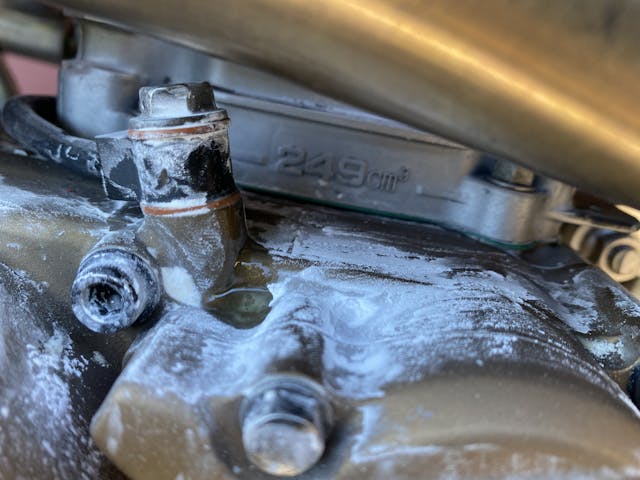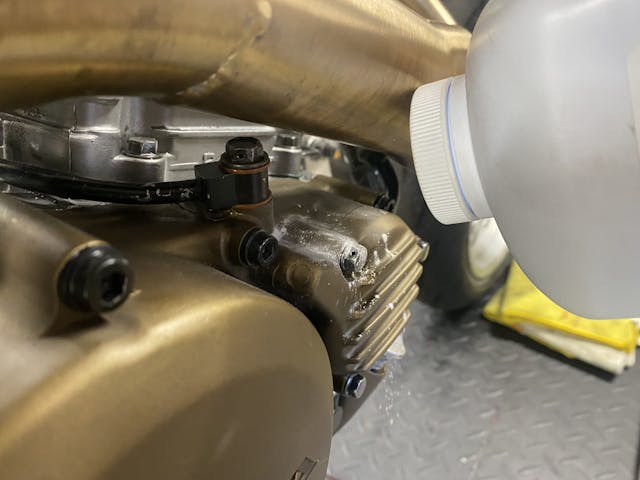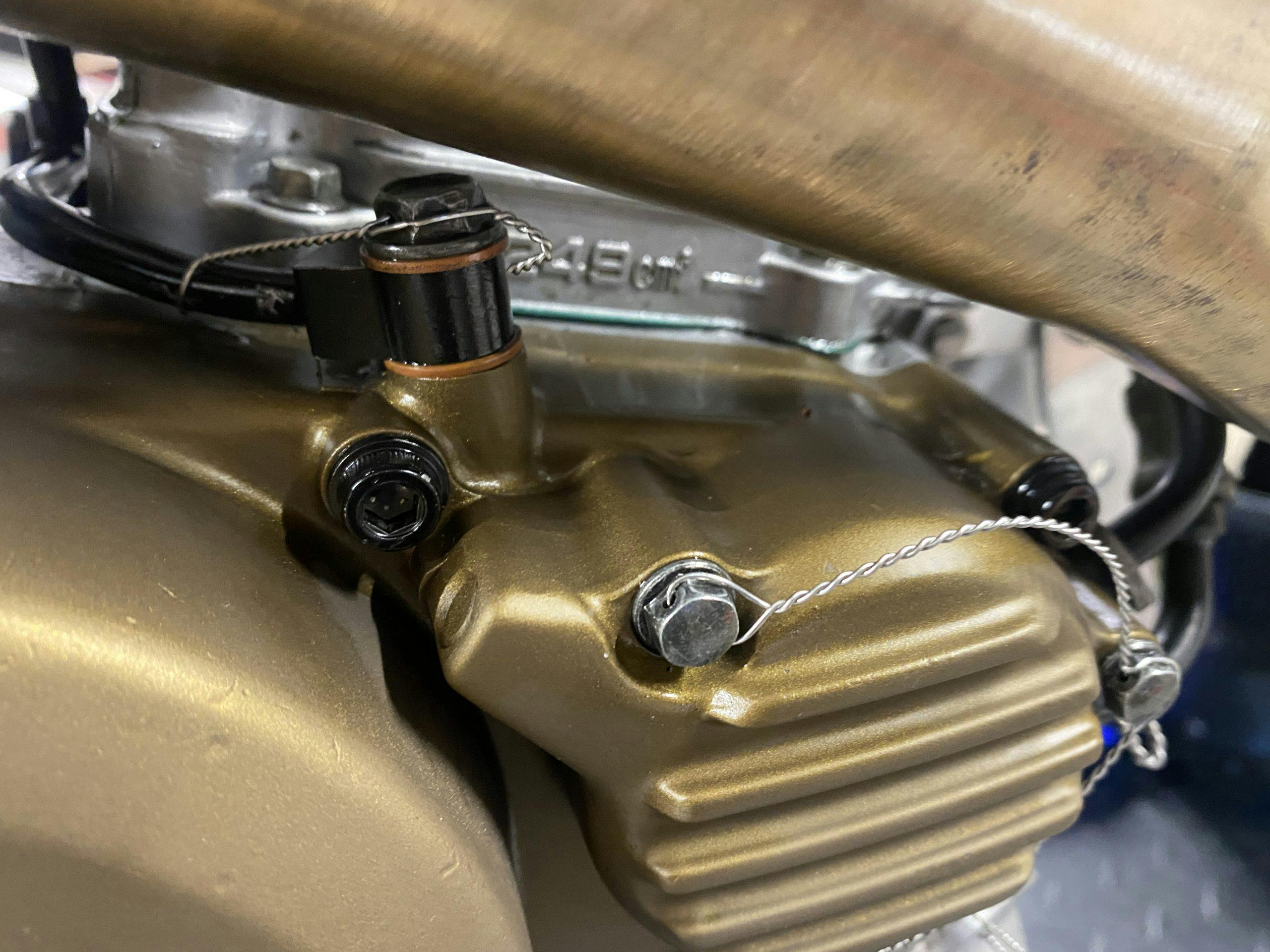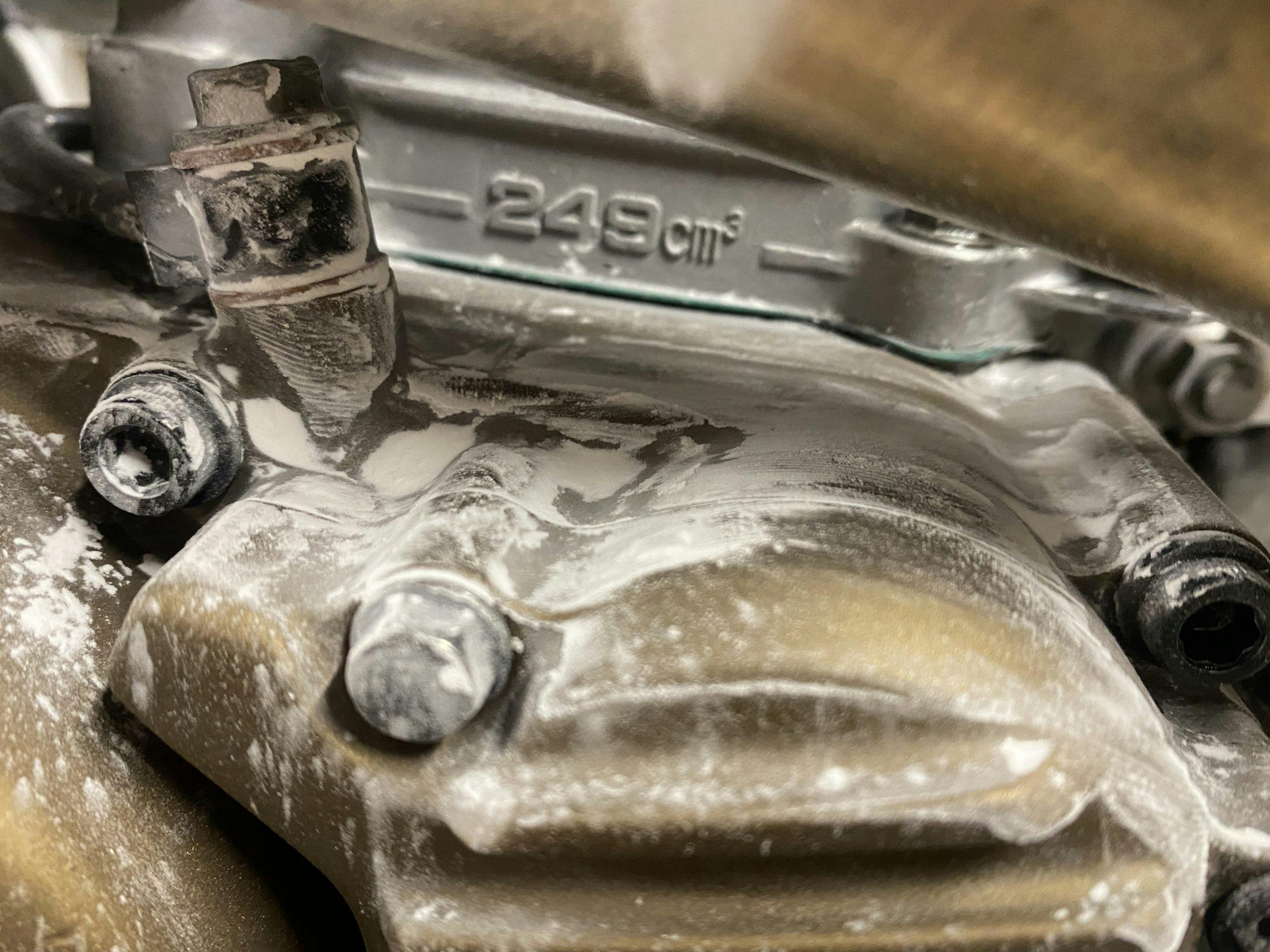How to pinpoint a fluid leak with baby powder
The correct number of leaks is zero. This is inarguable. Leaks do happen, though, whether due to failure of a gasket or assembly error. Sometimes it’s the smallest little weep of oil—quite tolerable, though it requires a wipe from time to time, since you don’t want buildup of oil schmutz. It can be hard to tell exactly where a leak begins, and that is why you should keep some baby powder among your garage chemicals. Here’s how to make this superfine clay mineral work for you.
An example of a confounding leak, I present this little section on the sidecover of my freshly-built Honda XR250R. There are multiple oil line connections and opportunities for leaks: the oil filter cover, the pair of oil cooler lines, and the banjo bolt that feeds oil to the cylinder head. Whenever I pulled off track this past week, I noticed a thin film of oil covering this area, though there was no obvious source. It was not enough oil to keep the bike off track, but it needs to be fixed properly before it becomes something worse or causes problems.
How do I narrow down the exact location of the leak? With baby powder.
Start by cleaning everything. In this case, a spotless clean required a small amount of chain cleaner to remove all the leftover oil and uncover a perfectly clean surface.
Then, lightly powder the area. Remove any excess before attempting to provoke the leak. For me, that meant a few runs up and down the street to reproduce the situation in which I had originally observed the seepage. Even at the worst, there was only a thin layer of oil and only high-rpm operation seemed to trigger it.
That’s why I shook on that little bit of baby powder: Even the slightest dampness will disrupt it. In the past I’ve used this trick to highlight porosity in a casting. Luckily, in this case, the culprit was a faulty copper washing in the banjo oil line. The fix will be to anneal the washers and re-tighten the bolt so that it seals properly. Not a big deal—but diagnosing it would have been tough without a little help, since it’s so close to the exhaust that I can’t use my fingers to detect any excess fluid.

Use this trick for any situation in which you are unable to watch the area while safely operating the engine or vehicle. Baby powder cleans up easily and is safe for pretty much any material you would find on a car or motorcycle. A quick wipe down or wash will remove it. Don’t tolerate leaks—solve them!
Check out the Hagerty Media homepage so you don’t miss a single story, or better yet, bookmark us.







What does ‘disrupted baby powder’ look like.. I can’t tell the difference in the photos
What I’m seeing in the photo is that the leak has caused the baby powder to vanish, and the leak is clear, as in see-through. It’s no longer white or a powder. The leak shows itself and it’s surrounded by the white baby powder.